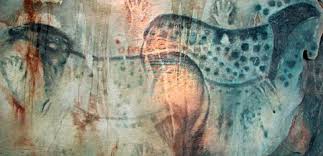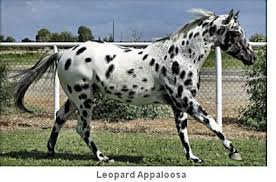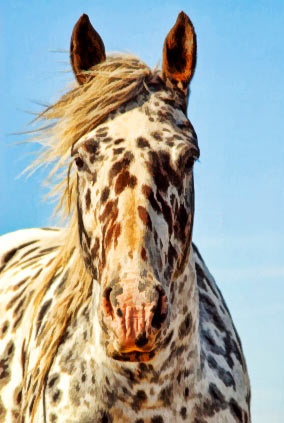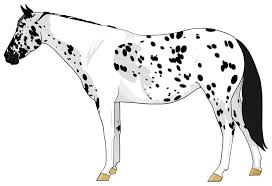A couple of years ago there was a TV documentary, 'True Appaloosas' about a journey by a New Zealand horse breeder, Scott Engstrom, when she was 66 years of age, to Kyrgistan after reading about a horse breed that closely resembled the Appaloosa breed. Modern Appaloosas are of course a modern breeding success but they seem to have an origin in horses bred by the Nez Perce tribe, famous for the long march to the Canadian border pursued by the US Army. The Nez Perce favoured spotted horses and appear to have bred them specifically for their markings – but also bred other kinds of horses. Engstrom had been breeding appaloosas for a great part of her life and was interested in their origins. In Kyrgistan spotted horses still exist in a semi wild state – so how did the Nez Perce in the middle of N America come to have them.
At http://horsetalk.co.nz/2014/09/05/film-explores-theory-ancient-origins-a… we have the story behind the making of the film. At http://appaloosamuseum.org/history-of-the-appaloosa/ … through the ages spotted horses have been gien names such as the Celestial Horse of the Chinese, the Knobstrupper of the Danes and the Tigre of the French. The name Appaloosa is derived from the Palouse Country and the river of the same name, situated in Washington State and Idaho. The word Palouse probably has an origin the language of the Nez Perce tribe. However, spotted horses existed in the Pleistocene period – you can see them painted on cave walls in the Ice Age, at Lascaux for example
 … Anthropologists, it seems, have theorised the Ice Age horses were the ancestors of modern breeds – such as the appaloosa. However, modern interpretation of the spotted horses on cave walls say the spots represent dreams or visions. Some have suggested they represent the stars, seeing in them constellations. We might wonder if any of that were true why could there not have been spotted horses on which they were modelled.
… Anthropologists, it seems, have theorised the Ice Age horses were the ancestors of modern breeds – such as the appaloosa. However, modern interpretation of the spotted horses on cave walls say the spots represent dreams or visions. Some have suggested they represent the stars, seeing in them constellations. We might wonder if any of that were true why could there not have been spotted horses on which they were modelled.
 like this … or something like this …
like this … or something like this …  or this …
or this …  so where did the Nez Perce aquire their horses. Could they have survived the Ice Age as horses were part of the Pleistocene fauna of N America.
so where did the Nez Perce aquire their horses. Could they have survived the Ice Age as horses were part of the Pleistocene fauna of N America.
In the Late Bronze Age the use of chariots favoured horses of the Asiatic steppes – and they turn up in China just as much as Europe and the Middle East. The Persians had spotted horses – including the war horse of Rustam. Spotted horses turned up in Austria, Spain, France, and in England in the 12th century AD. The Spanish introduced horses into N America including north of the Rio Grande (in the 15th and 16th centuries). In the 18th century the Nez Perce had aquired horses and quickly became adapt at breeding them – but did they breed them with native horses?
At www.historyextra.com/feature/animals/how-did-appaloosa-horse-get-north-a… … it gets down to the really interesting point. How did the spotted horses reach N America? Is it possible they survived the end of Ice Age events- and it would be truly remarkable if they did. Maybe the tribes of N America never thought of taming and riding them – until the arrival of the Spanish. Could the Plains Indians have bred so many horses in a couple of hundred years as they appear to have become extraordinarily common by the 19th century. Scott Engstrom wondered if it is possible and she was a professional horse breeder. The Kyrgistan horses had almost been wiped out as the Soviets had sought to discourage a nomadic way of life. Parts of Kyrgistan are so remote and inaccessible they appear to have survived in a unique region but were the descendants of horses much more common in central Asia. Is it possible they reached N America during the Holocene? This would avoid the embarrassing nature of their survival when mainstream has been telling everyone for years that they became extinct in N America.
